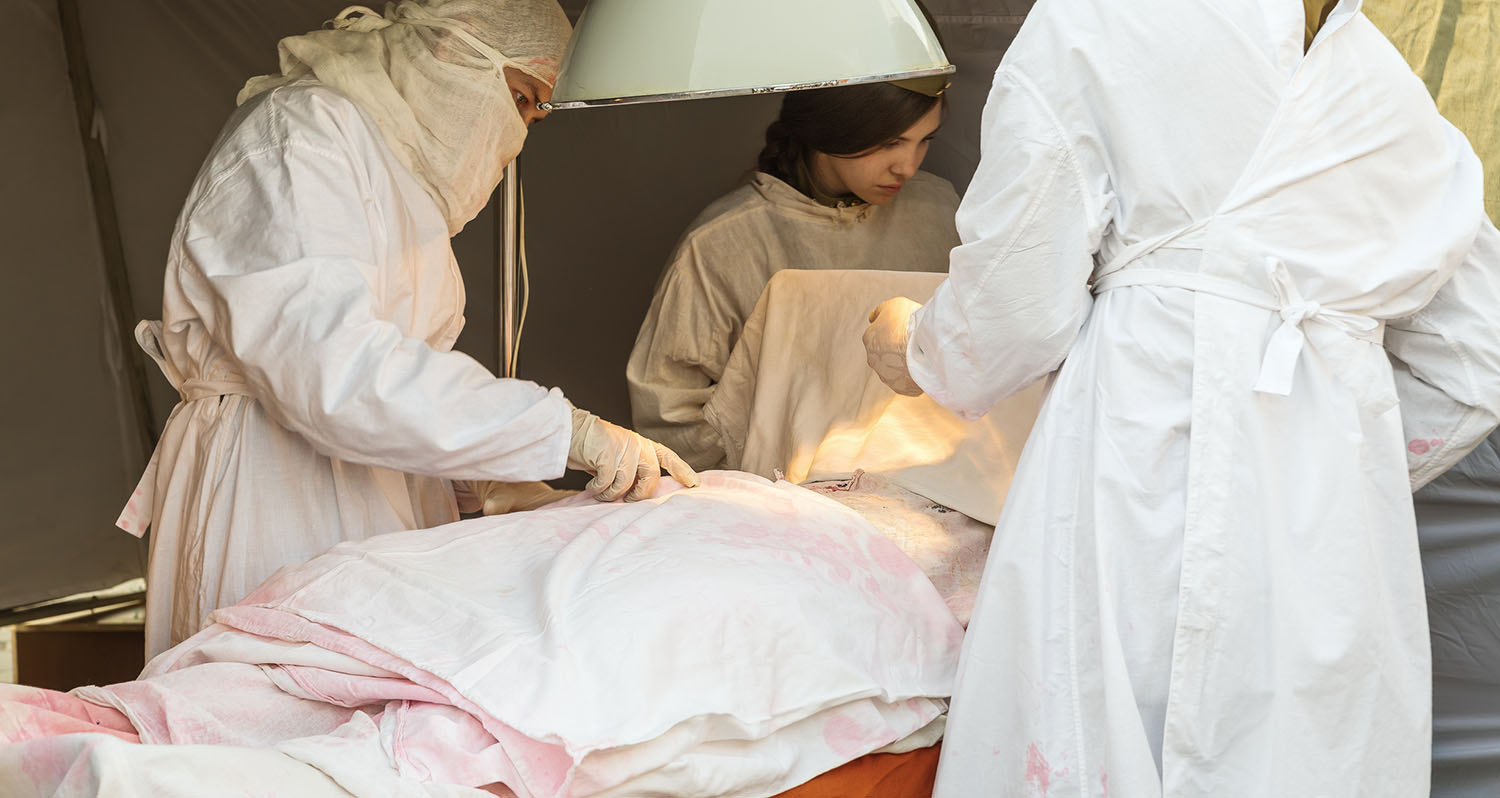
31 Aug A Brief History of Wound Care for the Past Century
Humankind has been healing wounds for thousands of years. But wound care has evolved from practices that were centered around superstition to those based on science and patient care. Fortunately, we now have various processes for wound dressings that lead to the best possible patient outcomes. But it’s been a process. Here’s a brief history of wound care for the past century and how FritzFinn’s innovation solution fits into the timeline as a wound care innovation.
World War I era wound care and nursing
From the period just before, during, and after World War I, it was a typical practice to apply salt to a wound bed and then cover it with dry gauze. Towards the end of the war, the British Army began using the Carrel-Dakin method, which consisted of packing a wound with gauze and then continuously infusing hypochlorite solution into it.
During this period, nurses were both volunteers and formally trained professionals. During the war, nurses were in charge of packing and tightly bandaging wounds before injured soldiers were moved to the nearest hospital.
Metallic antiseptics in wound care
Metallic antiseptics were introduced as wound care solutions in the late 19th century. In 1928, silver ceramic powder became a more common item used for wound care. And in 1958, silver sulfadiazine started being used. These items were commonly used to treat Pseudomonas infections caused by burns.
Health care workers began applying zinc to wounds to encourage healing in “zinc-deficient” patients by 1974. This eventually produced a product called “Unna’s zinc sulfate paste,” which remains in use today to treat chronic leg ulcers. The introduction of antibiotics and the development of some of these products helped control infections and reduce mortality rates.
Moist wound healing
By the late 1960s, the way wounds were treated was beginning to change. Three experts, Cameron Hinman, Howard Maibach, and George Winter, reported on the effectiveness of using a technique of moist wound healing. This led wound care specialists to focus their efforts on using specialized dressing to maintain a moist wound healing environment.
Wound nursing and specialty
In 1958, the first official wound nursing specialty was established at the Cleveland Clinic. However, board certification in this specialty wasn’t an option until 1980.
21st Century wound care
Wound care innovation has evolved to encompass a variety of advanced wound treatments that prevent infections, reduce scarring, and promote healing. More than 5,000 wound care products currently exist, and there are now specialized wound healing facilities across the U.S.
FritzFinn is one of the organizations that focuses on innovating wound care with its advanced solutions. THE CARE PACKAGE from FritzFinn is a personalized wound care solution for post-surgical and acute wound care patients. This all-in-one package of high-quality wound care materials is delivered directly to the patient’s door.
The SMARTKITS includes everything a patient needs for a single wound care dressing, including collagen, which promotes moist wound healing. Not only does this wound care solution meet the highest requirements for patient care and convenience, but it also sets your practice apart and helps it grow.
For more information about FritzFinn’s innovative wound care solutions, contact us today.


Sorry, the comment form is closed at this time.